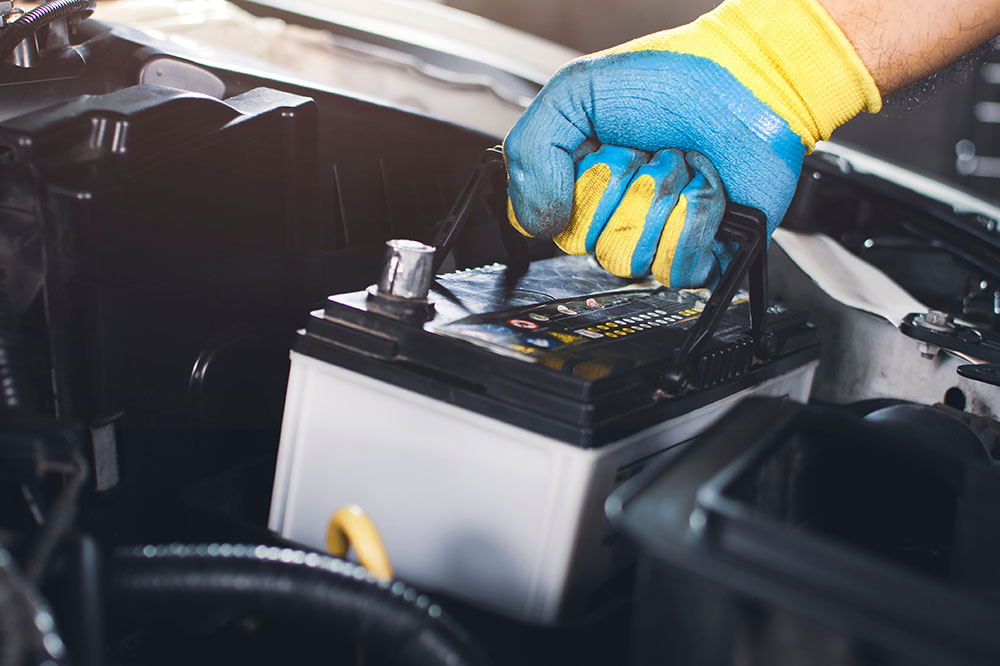11 Mistakes to Avoid for Effective Car Maintenance

Buying a car is an exciting milestone for every car lover. However, this milestone does not end with buying the vehicle; regularly maintaining it is essential to ensure its durability and splendor. Servicing the car periodically is a crucial part of its maintenance; further, certain simple steps followed on a daily basis can be beneficial to its sustenance over the long run. Here are some common mistakes one should avoid to ensure effective car maintenance.
Not getting the brakes inspected regularly
Often, the brake pads in cars tend to wear out over a period. Moreover, dust and debris may collect between the rotors and pads. Consequently, brakes may begin squeaking, which may turn into grinding noises if overlooked, culminating in brake failure. Thus, an important aspect of car maintenance is getting the brakes inspected regularly, especially if one hears squeaking noises.
Waiting till the last moment to refill the fuel tank
A common car maintenance mistake is to drive on reserve fuel and wait to refill the tank until it is almost empty. However, driving on reserve fuel can cause the accumulation of air in the tank and damage the pumps and injector with time. Excessive air accumulation in the tank causes severe resistance when the engine begins to utilize fuel later. So, it is imperative to refill the fuel tank even when it is half empty to avoid such repercussions.
Overlooking the need for oil change
Although it is traditionally advised to replace car oil after driving every 3,000 miles, several contemporary car models require oil change after every 7,500 or 10,000 miles of driving the car. This figure may vary between vehicles; therefore, it is best to check out the instructions given in the owner’s manual. As a thumb rule, it is advisable to change the oil after the car is driven for long distances. It also helps to be attuned to certain signs indicating the need for oil change, including a constant dip in the oil levels, a change in oil color from light to dark, and the turning on of the dashboard oil replacement light (a feature available in most latest car models).
Not referring to the owner’s manual
The owner’s manual provides detailed information about the vehicle and instructions for its optimal maintenance. Aspects such as safety and security, remote control, fuel refilling, and driving age are mentioned in this manual. Hands-on information like unlocking a locked door is also typically included in the owner’s manual. In most cases, a hardcopy of this guide is provided to the owner at the time of buying the car. However, if this hardcopy is misplaced or unavailable, one may visit the manufacturer’s website for more information.
Failing to detect a faulty spark plug
An optimally functioning spark plug is essential for vehicle ignition. So, it is important to detect signs of a faulty spark plug early and get it repaired to ensure that the car is in working condition. Some signs of a faulty spark plug include sudden reduction in mileage, strange noises and vibrations in the car, a dip in acceleration, and problems with starting the vehicle.
Not checking brake fluid levels
A car should entail brake fluids in sufficient amounts to ensure that it does not break down. One should constantly monitor brake fluid levels and check for changes in the color of the fluid. The owner’s manual typically provides instructions on checking the brake fluid levels. Moreover, while the original color of this fluid is light yellow, it may eventually turn brown with time, indicating that the fluid must be changed.
Failing to maintain fuel economy
Driving rashly and not maintaining average speed can play havoc with a car’s mileage and reduce the durability of its engine. Consequently, one may have to spend large amounts on getting the vehicle repaired frequently, leading to an exponential increase in maintenance costs. The best way to optimize fuel economy is to drive at a consistent speed of 80-90 km per hour.
Not maintaining the battery
A car’s manual entails instructions on ways to maintain the battery. It is essential to follow these steps to increase the vehicle’s durability. One should be aware of where the car’s battery is located and the technique to disconnect it and clean the terminal contacts. Further, to prevent accidents, one should switch off the battery’s negative terminal before carrying out any battery-related operations.
Driving without waiting for the engine to warm up
Another common car maintenance mistake is to accelerate immediately upon starting the vehicle, without waiting for the engine to warm up. Driving when the engine is cold can cause the consumption of more fuel than required. Thus, it is a good idea to drive at a low to moderate speed upon starting the engine and slowly increase the speed as the vehicle gains momentum.
Overlooking speed bumps and potholes
Speeding over bumps and potholes can cause damage to the car’s suspension system, which performs essential functions such as uniformly distributing the vehicle’s weight, increasing the contact between the road surface and tires, and absorbing shock. Maintaining a safe distance from the vehicle ahead can help one identify and dodge a pothole effectively. It is also important to continue holding the steering wheel firmly in case one cannot avoid a pothole, exercising control over the car at all times.
Forgetting to check tire pressure
Maintaining tire pressure is important not only to prevent flat tires but also to ensure fuel efficiency. Low tire pressure can cause the vehicle to consume more fuel than required. Thus, car owners should regularly check the car’s tire pressure to ensure tire durability and reduce fuel consumption.
The key to maintaining a car is to understand its components and their distinct functions clearly, reading the car manual as required, and actively assessing these parts regularly to ensure their optimal functioning. Understanding all crucial aspects of one’s car is the first step to facilitate its maintenance and durability.
















